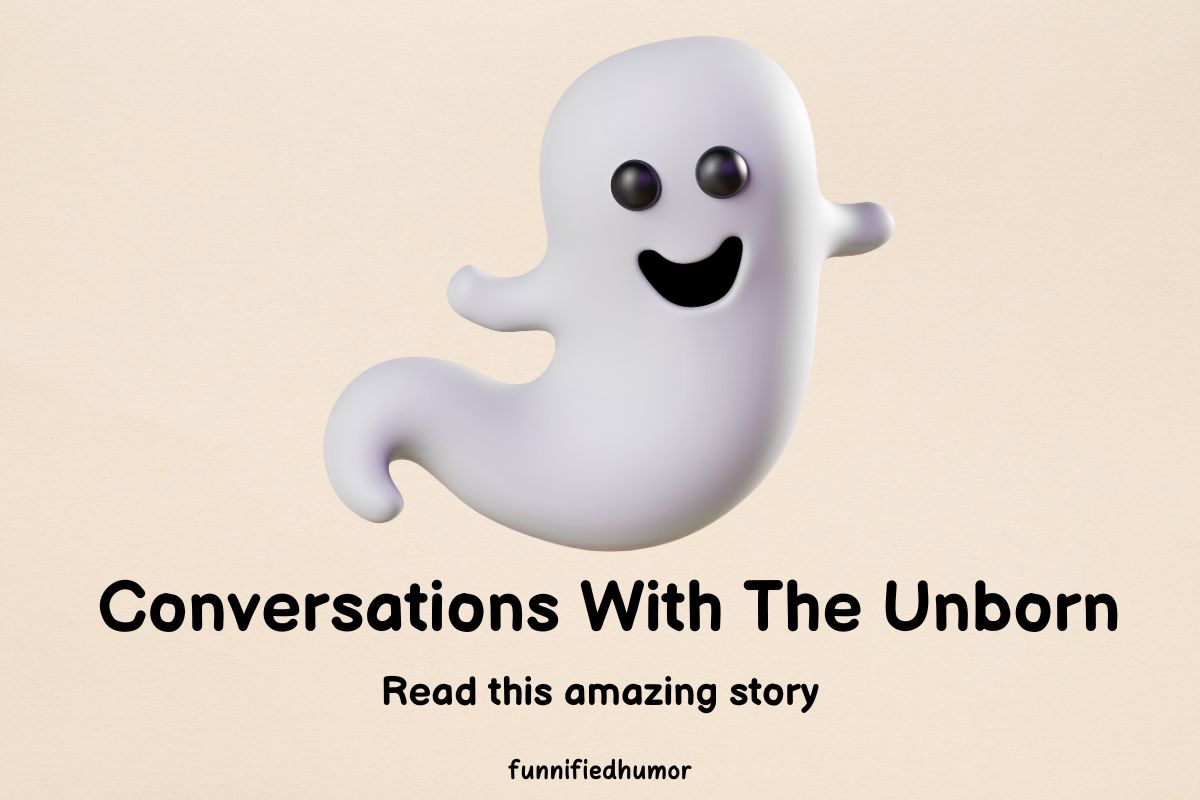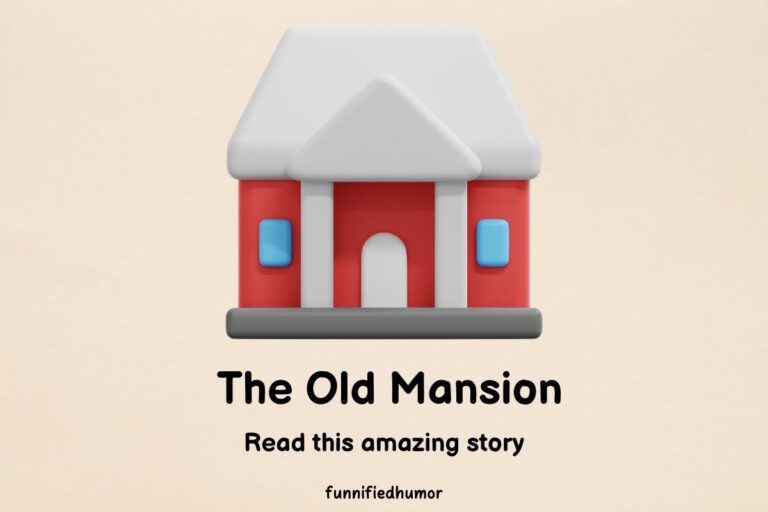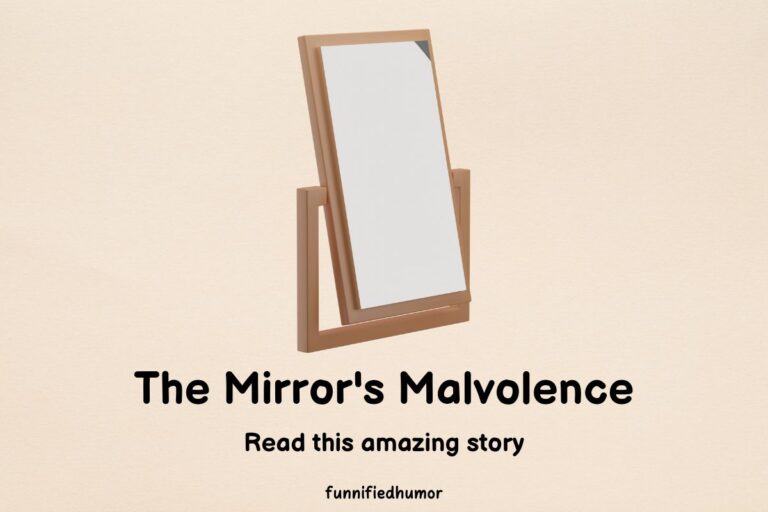Conversations With The Unborn

Rain pattered on the windows, the cold biting at the edges of the thin glass. Inside, Dr. Rebecca Mitchell fine-tuned her latest invention, a sleek black console surrounded by holographic displays. Flickering symbols danced across the screens as she calibrated the settings.
“Almost there,” she muttered, tracing her fingers over the touch-sensitive controls.
“Why are we working on this again?” asked her younger assistant, Dan. “I mean, communicating with the unborn? Seems kinda… out there.”
Rebecca sighed, “It’s not about ‘communicating’ in the traditional sense, Dan. It’s about understanding the potential of human souls, the choices they might have made, the lives they might have led. Just imagine understanding the purest form of human potentiality.”
Dan wrinkled his nose, “Sounds poetic. But still, ethically questionable?”
“Progress always is,” she replied, “Here, put these on.” She handed him a pair of headphones.
Dan placed them over his ears. At first, there was only a humming sound, but then faint whispers, unintelligible but unmistakably human.
“Do you hear that?” Rebecca asked, her voice barely above a whisper.
“Yes. It’s… unsettling.”
“That’s the sound of potential, my friend.”
Just then, a screen lit up with an incoming call. Rebecca tapped it, and the face of Mr. Suresh appeared.
“Dr. Mitchell,” he greeted with a hesitant smile, “How goes the experiment?”
“We’re close, Mr. Suresh,” she replied.
Suresh’s face darkened, “I’ve invested a lot in this project, Doctor. The world needs to know the potential it’s wasting. We’ve denied life to millions of souls out of baseless prejudice. It’s time for some answers.”
Rebecca nodded, “I understand the gravity of this. We’ll have more concrete results soon.”
The call ended and the room plunged into silence, save for the whispers from the headphones.
A week later, the device was ready for its first live test. Dan volunteered. Rebecca instructed him to sit comfortably and wear the headphones. She started the device and its pulsating hum filled the room.
Within moments, Dan’s face turned pale. He clenched the chair’s armrests, his knuckles white.
“Do you hear anything?” Rebecca asked, monitoring the readouts.
Dan nodded slowly, “I… I hear her.”
Rebecca frowned, “Who?”
“My… my daughter,” he whispered, his voice breaking, “The one we… chose not to have.”
Rebecca’s eyes widened, “What’s she saying?”
“She’s asking… why we didn’t want her.” Tears streamed down Dan’s face.
Rebecca quickly shut down the machine. Dan pulled off the headphones, his chest heaving.
“I need to go,” he said, not meeting her gaze.
After he left, Rebecca sat in contemplation. What had they tapped into? The device was meant to offer insight into the lives unborn souls might have led. But instead, it was channeling their emotions, their accusations.
She called Mr. Suresh, updating him on the unexpected results.
“This is bigger than we thought,” she said, “It’s not just about potential. It’s about confronting our choices.”
Suresh looked conflicted, “What do you suggest?”
Rebecca took a deep breath, “We need to understand this better. Find more volunteers. Let’s see if this is an isolated incident or something more.”
Suresh nodded, “Alright. But be careful. We’re treading on sensitive ground.”
Rebecca agreed, but deep inside, she felt an excitement she hadn’t felt in years. They were on the cusp of something monumental. But she also felt a twinge of fear.
How would society react when confronted with the souls they had denied life?
Little did she know, the whirlwind they had unleashed was about to sweep through the very foundations of their world.
Word spread quickly.
Local news outlets picked up on the story about the mysterious device that could let people communicate with unborn souls. It wasn’t long before Dr. Rebecca Mitchell’s laboratory was inundated with volunteers, many eager, some anxious, but all curious about the potential of the device.
Suresh watched from his office, conflicted. This device had the power to shake the core of society, but he wondered if they were pushing things too far. The initial goal had been to awaken people to the potential lost through decisions like female foeticide, but now it seemed to be evolving into something else entirely.
Inside the lab, a woman named Maya sat wearing the headphones. Her fingers trembled, and tears rolled down her cheeks. “She’s singing,” Maya murmured, “A lullaby I used to sing when I was a child. She knows it.”
Rebecca carefully noted the reactions of each participant. While not everyone heard voices, the ones that did often heard deeply personal messages or memories.
“This isn’t just about confronting our choices,” Dan said, returning to the lab after taking some days off. “This is about guilt, regrets, and an overwhelming sense of what could have been.”
Rebecca nodded, “It’s also about redemption, Dan. Many are finding closure and understanding their mistakes.”
But with the rise in volunteers came protestors. Groups formed outside the lab, some calling the technology an abomination, others demanding its release to the public. The social discourse was growing volatile.
“Dr. Mitchell,” Suresh called one day, his tone grave, “There’s been a development. Government officials want to see a demonstration. They’re considering regulations.”
Rebecca wasn’t surprised. “When?”
“Tomorrow. Prepare the lab.”
The next day, officials in crisp suits filled the lab. Rebecca gave a brief overview before a senior official, Mr. Rajan, volunteered to try the device. As the hum of the machine filled the room, the atmosphere grew tense. Everyone watched Rajan’s reactions closely.
After a few minutes, he removed the headphones, his face ashen. “It’s real,” he whispered. He seemed aged by decades in mere moments. “My daughter… She asked why she wasn’t good enough for this world.”
The room remained silent, the weight of his confession hanging heavy.
“This technology,” Rajan continued, gathering himself, “It has the power to change minds, to show people the consequences of their choices. But it also has the potential to tear us apart. People are not ready for this reckoning.”
Suresh interjected, “That’s why we need to control its release, ensure that it’s used responsibly.”
Rajan nodded, “We’ll deliberate. For now, no more public demonstrations. The world will watch, and we need to be ready.”
As the officials left, the weight of their project settled on Rebecca and her team. They had created a tool for introspection, but it also served as a mirror reflecting society’s deepest regrets.
The storm was gathering, and it was uncertain where it would lead.
The lab felt different after the officials’ visit. The buzz of excitement was replaced by a sobering seriousness. No longer were volunteers flowing in; instead, the doors were guarded, and the facility had become a topic of hushed conversations in the corridors of power.
Rebecca sat in her office, replaying the visit in her mind. Mr. Rajan’s reaction was haunting. It symbolized the collective guilt of a society, a guilt that had remained suppressed for years, now given a voice by her invention.
Dan knocked and entered, holding a tablet. “We’ve been receiving messages, Rebecca. Thousands of them. Some are from parents begging for a chance to communicate, seeking closure. Others are threats, blaming us for disturbing the natural order.”
Rebecca took a deep breath, “We opened Pandora’s box, Dan. We can’t close it now.”
As days turned into weeks, stories began to emerge outside the confines of the lab. People who had secretly tried the device began sharing their experiences. A mother spoke of hearing laughter and feeling a gentle tug on her hair, reminiscent of a playful child. A grandfather lamented over the grandson he never got to meet, who would have loved to hear his war stories.
But not all stories were of reconciliation. There were tales of voices filled with anger and resentment, souls questioning their very rejection from existence, asking why they were deemed unworthy of life.
One evening, as Rebecca worked late, a soft knock came at her door. A woman stood there, her face etched with years of pain. “Dr. Mitchell,” she began, her voice trembling, “My name is Ananya. I need to use the device.”
Rebecca hesitated. After the government’s directive, they weren’t supposed to have any unsanctioned sessions. But something in Ananya’s eyes made her relent.
The machine hummed to life. Ananya wore the headphones, her eyes closed, face bathed in the soft glow of the monitors. Minutes passed in silence, but when Ananya finally spoke, her voice was full of anguish.
“She hates me,” she whispered, tears streaming down, “She asked why I let her go, why I didn’t fight for her. She had dreams, hopes… all crushed because of me.”
Rebecca reached out, holding Ananya’s trembling hands. “I’m so sorry,” was all she could muster.
Ananya left the lab, her steps heavy, a broken reflection of countless others who had come face to face with their deepest regrets.
The news of Ananya’s visit leaked. Media and protestors thronged the lab. The device was no longer just a technological marvel; it had become a symbol of societal reckoning.
As weeks turned to months, the discussions around the device grew more polarized. There were fervent demands to make the technology public, to let every individual confront their past. At the same time, there were calls to destroy the device, with critics labeling it as a dangerous manipulator of emotions.
In the midst of this storm, Suresh convened a meeting. “The government wants to nationalize the technology, Rebecca. They believe it’s the only way to control the narrative and ensure stability.”
Rebecca looked aghast, “Nationalize? It’s my life’s work!”
Suresh nodded sympathetically, “I know. But they believe it’s for the greater good.”
Rebecca realized the gravity of the situation. The echoes of regret had started a tidal wave, and its ultimate direction was still uncertain.
In the heart of the city, a grand conference was organized. The government, sensing the societal upheaval, had decided to hold a public demonstration, hoping it would quell the unrest. On stage, flanked by officials and security, sat the device, now referred to as the ‘Soul Commune’.
The crowd was massive, a sea of faces filled with anticipation, fear, curiosity, and judgment. News channels broadcasted the event worldwide. This was no longer a local phenomenon; the entire world watched, entranced by the promise and peril of the Soul Commune.
Mr. Rajan took the stage, his presence commanding immediate attention. “Ladies and gentlemen,” he began, “We stand at the cusp of a new era. This device offers us a chance at redemption, at understanding, and at healing.”
He gestured towards the device, “However, we must approach it with caution. The voices we hear, the emotions we feel, they can be overwhelming.”
As he spoke, a screen behind him displayed recorded testimonials of individuals who had interfaced with the Soul Commune. Stories of love, pain, regret, and forgiveness played out, painting a complex tapestry of human emotion.
Rebecca, watching from the wings, felt a mix of pride and fear. Her invention had the power to change the world, but she was no longer sure if it would be for the better.
Then, a surprise announcement. “We have selected a few individuals from the audience,” Rajan continued, “To try the Soul Commune. They come from diverse backgrounds, and their experiences will help us all understand the true power of this device.”
A hush fell over the crowd. One by one, individuals took the stage and donned the headphones. Their reactions varied from tears to smiles, from shock to tranquillity.
However, the turning point came when an elderly woman, Mrs. Malathi, took the stage. She wore the headphones, her eyes closed. Minutes stretched on, but she remained still, a serene expression on her face. When she finally spoke, her voice was calm but carried an undeniable weight.
“She forgives me,” Malathi whispered, “She understands the societal pressures I was under, the fear I felt. She harbors no ill will. She only wishes she could have lived.”
A collective gasp echoed through the audience. Here was a soul, wronged in the worst possible way, yet it offered forgiveness.
The event concluded with many questions still unanswered. While some found solace, others felt the stirrings of a deeper unrest, wondering about the morals and ethics of their society.
As days progressed, grassroots movements began. Communities came together to discuss the implications of female foeticide, the pressures of societal norms, and the deep-rooted biases that led to such decisions.
Rebecca, on the other hand, grappled with her role in this societal upheaval. The Soul Commune had given voice to the voiceless, but at what cost? The device was now under governmental control, its usage restricted and monitored.
One evening, as Rebecca sat in her now-empty lab, she received an unexpected visitor – Ananya.
“I’ve started a support group,” Ananya began without preamble, “For mothers like me. We share, we cry, we heal. The Soul Commune was a painful wake-up call, but it has also shown us a path to redemption.”
Rebecca looked up, tears in her eyes, “I never intended…”
Ananya smiled gently, “Change is never easy, Dr. Mitchell. But sometimes, it’s necessary. Your invention is making us face our past, but it’s also giving us hope for a better future.”
And as the sun set, the two women sat in quiet reflection, pondering the complex interplay of science, society, and the human soul.





